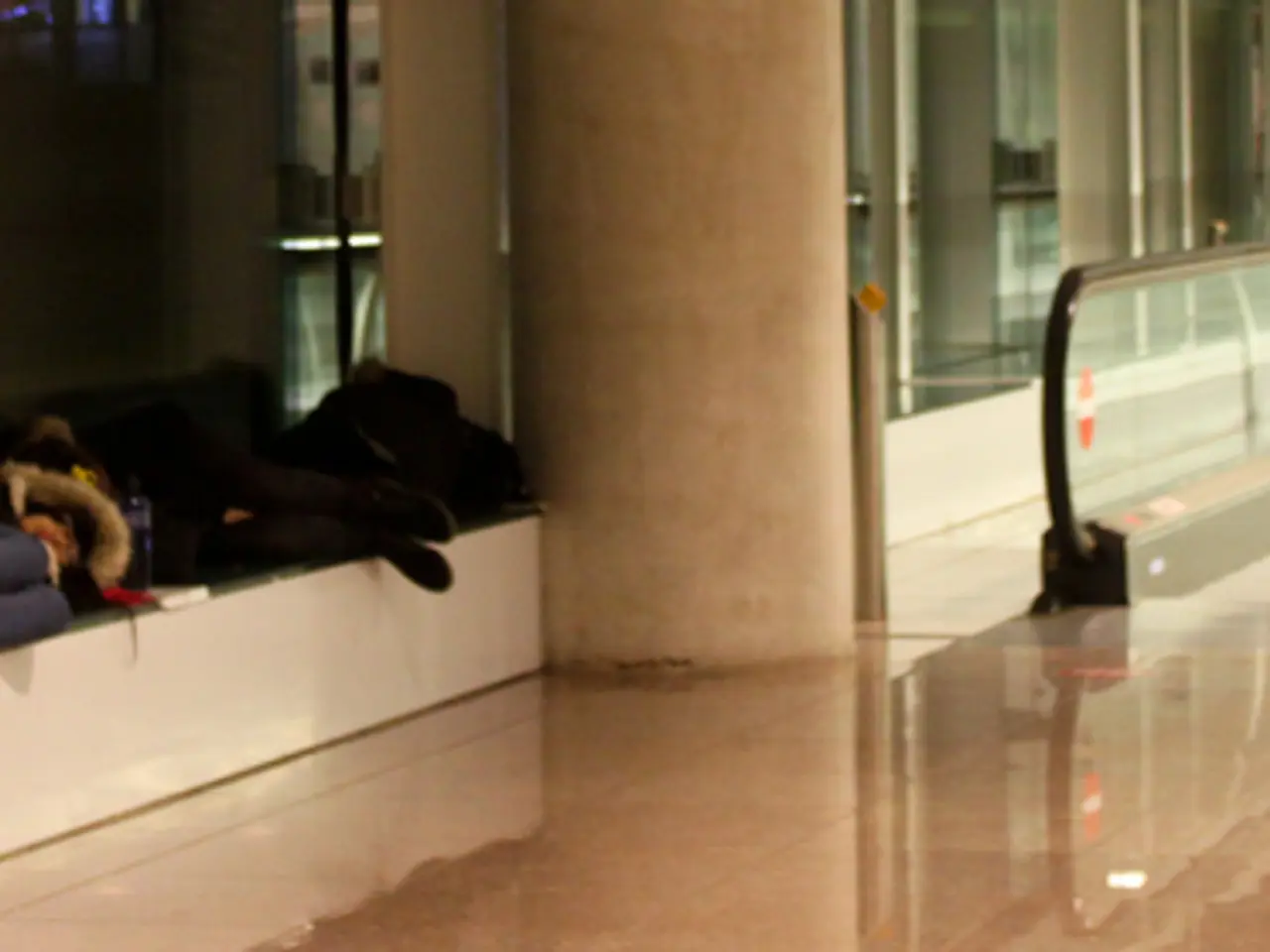Reason behind the Variation between Passenger Boarding Bridges and Boarding Stairs
In the world of air travel, the method used for boarding a plane can vary significantly, depending on factors such as airport infrastructure, aircraft parking positions, and operational considerations.
Passengers usually board planes via either a passenger boarding bridge (jet bridge) or boarding stairs. Passenger boarding bridges are preferred due to their comfort, safety, and weather protection. These enclosed, movable walkways connect the terminal directly to the aircraft door, providing a comfortable and secure route onto the plane. Airports with gates equipped with jet bridges typically use them for commercial flights for efficiency and passenger convenience.
On the other hand, boarding stairs (mobile staircases or steps) are used when passenger boarding bridges are not available or cannot be used. This often occurs when the aircraft is parked at a remote stand on the tarmac away from the terminal building, possibly due to congestion at gates with jet bridges. It can also happen at smaller or regional airports that lack jet bridge infrastructure. In some cases, the specific aircraft type or parking position may not align properly with existing jet bridges, or operational choices, such as during peak times or for budget airlines attempting faster turnarounds, may lead to using stairs instead of a bridge, as stairs are less costly and more flexible.
In summary, boarding via stairs happens primarily at airports or stands without jet bridge facilities, or when logistics or costs favor remote parking. Bridges are used when terminals have the infrastructure and aircraft can park at compatible gates, aiming to enhance the passenger experience and streamline boarding.
Some airlines, like Ryanair, choose not to use passenger bridges to reduce costs. These airlines may have their own stairs attached to the plane. At large airports, both bridges and stairs may be used for passenger boarding, with passengers boarding by walking on the safe area on the apron or by taking an apron shuttle bus in some cases.
In airports with a high volume of flights, momentary planning errors can cause passengers to have to board or deboard planes via stairs instead of bridges. Unforeseen circumstances, such as delays in apron traffic management, can also lead to this situation. In high-traffic time zones, the number of bridges at some airports may be inadequate, causing some planes to park at open positions and passengers to board via passenger stairs.
It's important to note that at some airports, passenger boarding bridges may be reserved for Schengen member country airlines, causing non-EU airlines to use stairs for boarding and deboarding. The reasons for the different situations encountered at such airports are not specified in the text.
In conclusion, the choice between boarding by passenger bridge or boarding stairs depends on the airport's size and infrastructure, as well as operational decisions. Passengers can expect a comfortable and efficient boarding experience when passenger boarding bridges are available and the airport infrastructure supports their use.
- In some instances, particularly at smaller or regional airports, or at remote stands on the tarmac due to gate congestion, passengers may need to board planes via boarding stairs due to a lack of jet bridge infrastructure.
- At large airports, both passenger boarding bridges and boarding stairs may be employed for passenger boarding depending on factors such as aircraft type, parking position, logistics, costs, and operational decisions.
- The lifestyle of passengers can potentially be impacted when boarding by passenger stairs, as it may offer less comfort and weather protection compared to boarding via passenger boarding bridges, especially during adverse weather conditions or long waits at the aircraft.








